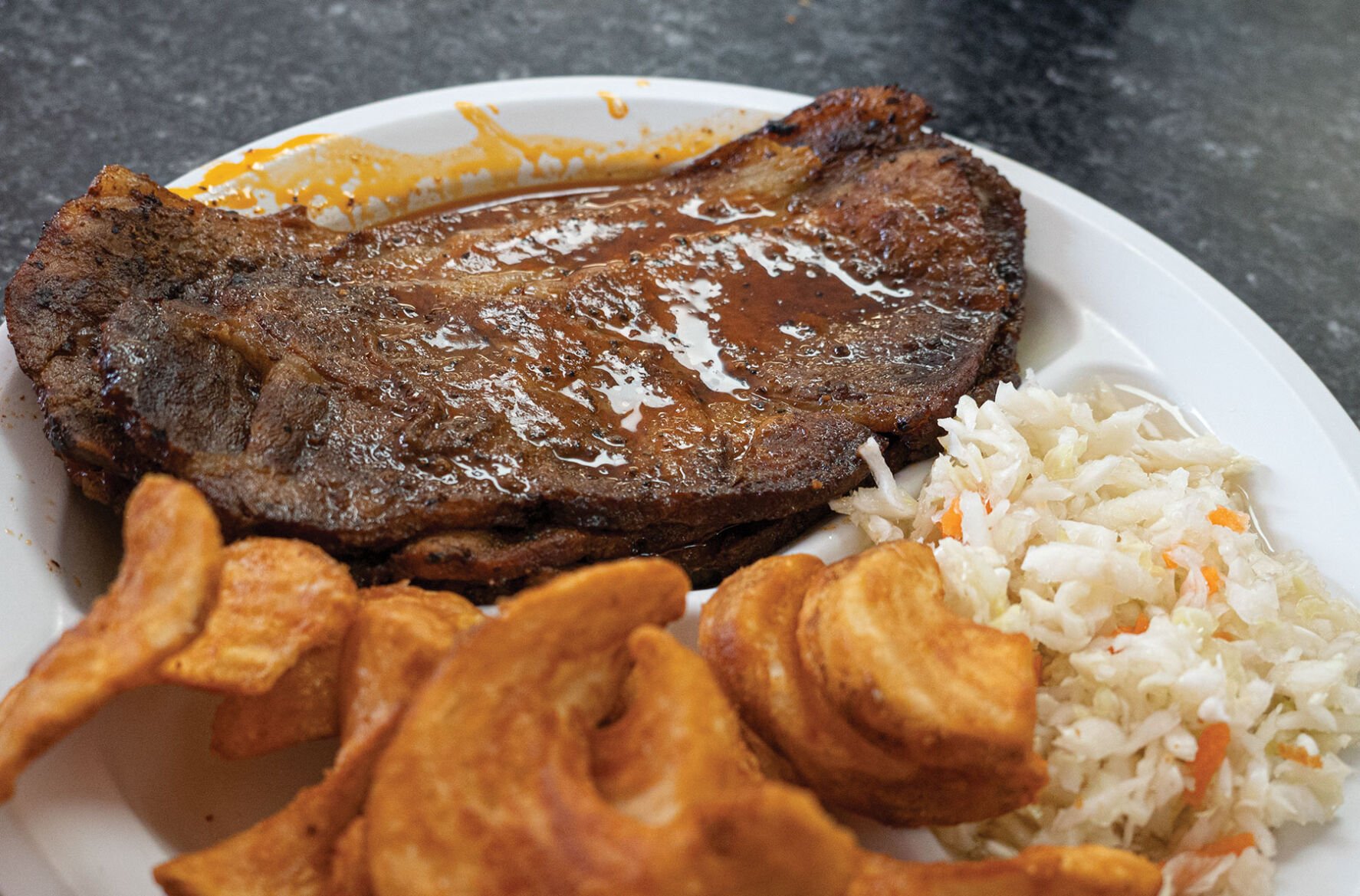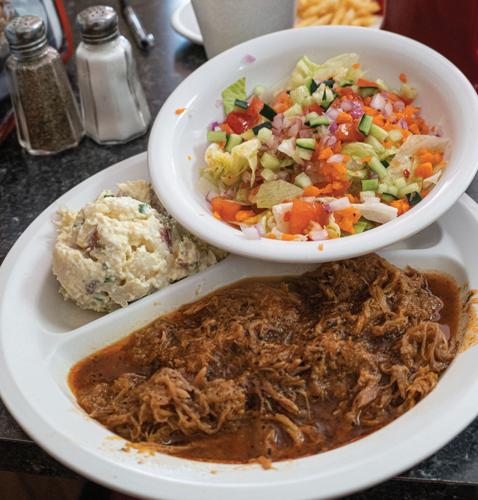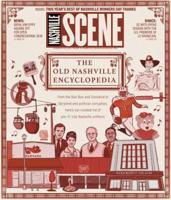With the surfeit of barbecue restaurants in Nashville, surely by now we’ve all tried every variant there is to be had: Carolina whole-hog with either vinegar- or mustard-based sauce, Memphis dry rub, Kansas City burnt ends, Alabama white sauce, Texas brisket. Heck, the true completist can even get a tri-tip sirloin from the grocery store or the butcher and have a go at California’s Santa Maria-style. (That last one is worth it and perfect for a camping trip, by the way.)
But to truly fill out the barbecue bingo card, head northeast about 100 miles on the backroads of the Upper Cumberland, through Red Boiling Springs (home of some truly opulent Victorian hotels and an ignominious high school football record), Hermitage Springs (before 2007, home of one of the last K-12 public schools in Tennessee) and Moss (home of Dumas Walker, made famous by the Kentucky Headhunters, and a shocking number of sawmills).
State Route 52 dives off the ridge at Moss, heading precipitously into the valley where the Obey River joins the Cumberland in Celina, the seat of Clay County. At the edge of downtown, such as it is, is Dale Hollow 1 Stop Barbecue, where the meat is “finer than frog’s hair split four ways,” according to the T-shirts of the men in the kitchen.
All the usual suspects are there — smoked pulled pork as a plate or a sandwich, chicken, a baked potato positively engorged with meat and cheese. But at the top of the laminated menu: “shoulder.”
And that’s what you’ve come for: Monroe County barbecue, named for the Kentucky county just across the state line and available only in this little pocket of the world.
The style has received a little bit of outside attention after a 2018 story in The New York Times. But on Mother’s Day 2022, the parking lot features mostly license plates from Clay and neighboring counties (and one Prius from Nashville) as the after-church crowd fills the place. Rather than slow-smoking a whole shoulder (or a Boston butt, named not for its location on the hog, but for the fact that the cut was formerly shipped in barrels), as is typical around here, they slice the shoulder super-thin and grill it over hickory.

To a purist — and let’s face it, plenty of us have corrected friends from the North who say they are having “a barbecue” when all they are doing is grilling — this may not meet the technical definition of barbecue. It’s a quick, high-heat method. The glowing hickory does, however, impart some smoky flavor.
But the secret, as they say, is in the sauce.
It’s a mixture of lard, butter, vinegar and enough cayenne and black pepper to make Paul Prudhomme sneeze. It’s slathered on while the shoulder steaks are on the grill, and when they are done cooking, they get a second soak before they slide on your plate next to two sides. (Order the potato twisties and thank me later.)
The result is tender slices of pork cooked to a hellhouse reddish-orangey-brown, the lard and butter parts of the sauce staining the plate, the black pepper and cayenne searing the tongue and the vinegar puckering the lips.
The provenance of this particular style? That’s as much of a mystery as why it’s never escaped the isolated Pennyrile and Upper Cumberland, where it’s king. According to the Times, a proprietor in Tompkinsville, Ky., learned of the sauce from her grandfather, who said it came out of a camp of enslaved people near Cave City. And that seems reasonable enough, as the ingredients are fairly inexpensive and easy to acquire.
The question of why pork steaks was thornier. One theory is that because they are quick-cooking and cheap, tobacco farmers served them to their farmhands. (There’s a similar theory as to how the aforementioned Santa Maria style came about.)
But as the Times notes, because the steaks are traditionally cut so thinly, it’s virtually impossible that the style predates the advent of the industrial freezer and the commercial meat slicer. It’s all but impossible to cut a pork shoulder into half-inch slices with a butcher knife, and it’s even harder if the meat isn’t frozen.
However it came about, it should end up in your mouth.
The drive is a perfect summer day trip, and Celina is hard against Dale Hollow Lake, one of the Tennessee Valley Authority’s most aesthetically pleasing projects, in part because it has a largely rock bottom and thus always looks clean and shimmering, unlike some Middle Tennessee mud-bottomed lakes that will remain nameless.
Pile in the Prius and head to the Pennyrile and the Plateau to put paid to the notion that Memphis has Tennessee’s only vernacular barbecue style.
Summer Guide is presented by Two Lane
Waterfront dining, a Renaissance festival and coveted barbecue — plus more great summertime stuff to do and where to do it







